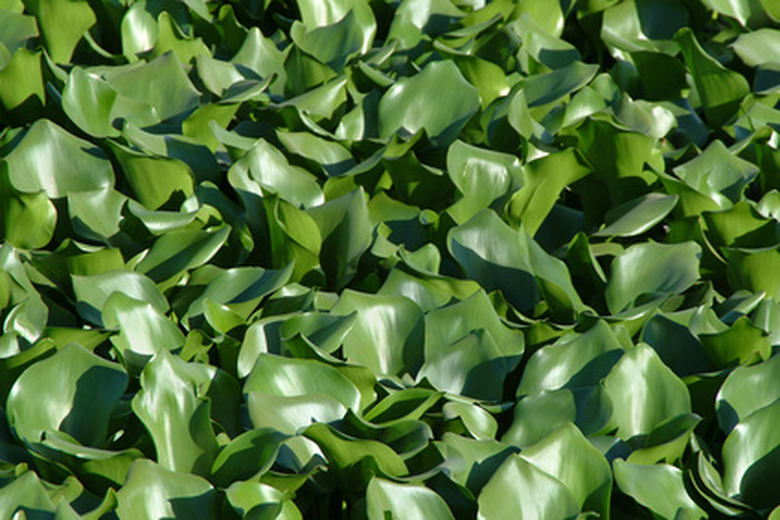How To Propagate A Water Hyacinth
Water hyacinth is a floating aquatic plant from Brazil, with bright green, fan-shaped leaves, which emerge from clusters of fleshy bulbs. Its spikes of showy, purple flowers held above the floating plants are reminiscent of Dutch hyacinths. Water hyacinth is considered an invasive weed, especially in areas where it is not killed by annual winter frosts. In warm regions, it can reproduce very rapidly and has been known to double its population in as little as six days. Nevertheless, with a little care and routine maintenance, this plant can be an attractive addition to closed backyard ponds. It is easily propagated by division.
Step 1
Scoop a mature water hyacinth plant out of the water with a swimming pool net. Be sure to use a sturdy net because large plants can be quite heavy.
- Water hyacinth is a floating aquatic plant from Brazil, with bright green, fan-shaped leaves, which emerge from clusters of fleshy bulbs.
- Nevertheless, with a little care and routine maintenance, this plant can be an attractive addition to closed backyard ponds.
Step 2
Place the plant on a work surface protected with several layers of newspaper and examine the base of the plant. Look for smaller daughter plants attached to the parent plant by thin side shoots, or stolons.
Step 3
Use utility scissors to cut the stolons, then remove several of the young plants from the parent. You can keep the parent plant for faster establishment, or simply grow the daughter plants.
Step 4
Place the detached plants in a bucket of water, then transfer them as soon as possible, to the surface of a closed pond where they will receive at least partial sun.
Step 5
Maintain your water hyacinth population by removing up to half the plants from your pond with a swimming pool net at least once a year, perhaps more often in warm climates. Try to keep at least half of the pond's surface clear of vegetation at all times, to maintain proper dissolved oxygen levels, especially if you have fish.
- Place the plant on a work surface protected with several layers of newspaper and examine the base of the plant.
- Place the detached plants in a bucket of water, then transfer them as soon as possible, to the surface of a closed pond where they will receive at least partial sun.
Tip
Save the plants you remove to make mulch or compost, because they are very rich in minerals and other nutrients. Place a small, flowering water hyacinth in a large bowl of fresh water for a temporary centerpiece. Transfer a few water hyacinth plants to an aquarium to keep them over the winter where temperatures dip below freezing. Supplement the diet of chickens, pigs and goats with fresh water hyacinth tops. Use water hyacinths to filter pond water, and slow the growth of algae for better fish health.
Warning
Never allow water hyacinth to escape into natural water bodies because this extremely invasive aquatic plant can seriously damage aquatic ecosystems and even block watercraft access. It is illegal to posses water hyacinth in Texas and Florida.
Things Needed
- Swimming pool net
- Utility scissors
- Newspaper
- Bucket of water
